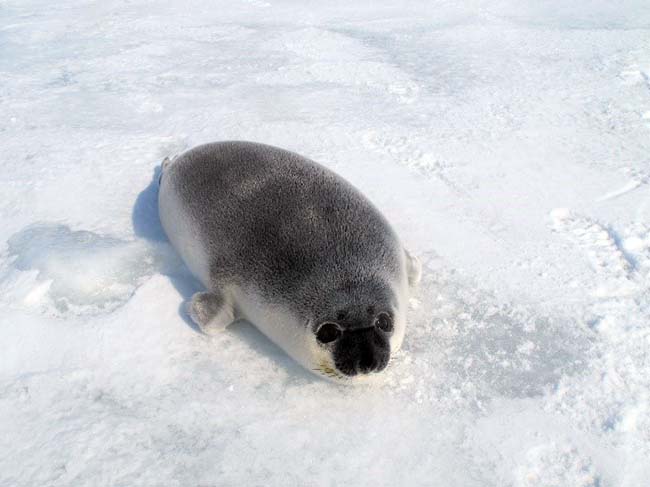Hooded seal
Learn about hooded seals, including their life cycle, diet, distribution and population trends.
On this page
Life cycle
Hooded seals have a lifespan of roughly 30 years. Adult males average 2.6 metres in length and weigh between 300 and 460 kg. Females average 2.03 metres in length and weigh between 145 and 300 kg.
Hooded seals give birth on pack ice during mid to late March. Pups are born with a slate blue-grey coat called a blueback. They moult this at about 16 months of age but might keep the blueback colour for another year. Females nurse their pup for an average of 4 days, during which the pup doubles in size.
Diet
The hooded seal’s diet varies regionally and includes:
- squid
- capelin
- redfish
- small crustaceans called amphipods
- krill
- Atlantic cod
- Greenland halibut
- Atlantic argentine
Distribution
The hooded seal is found in 2 populations in the central and western North Atlantic. They range from Svalbard in the east to the Gulf of St. Lawrence in the west. The Greenland Sea population pups on the ice off east Greenland.
The Northwest Atlantic population pups:
- in the southern Gulf of St. Lawrence
- in the Davis Strait between Greenland and northern Canada
- off the coast of northern Newfoundland and Labrador, known as the Front
After the breeding season, hooded seals disperse to feed and migrate to the moulting areas off southeast Greenland. After moulting in July, they migrate along the Greenland coast to Baffin Bay and Davis Strait where they feed. They return to breeding areas in late winter.
Population trends
We estimate the size of the hooded seal population with a model incorporating estimates of:
- pup production
- reproductive rates
- information on removals
In 2006, the estimated total Northwest Atlantic (Canadian) population was 593,500. While historical trends in abundance of Northwest Atlantic hooded seals are poorly known, it is believed that the population is near historical levels.
The hooded seal was assessed as ‘Not at Risk’ by the Committee on the Status of Endangered Wildlife in Canada in April 1986.
- Date modified:

